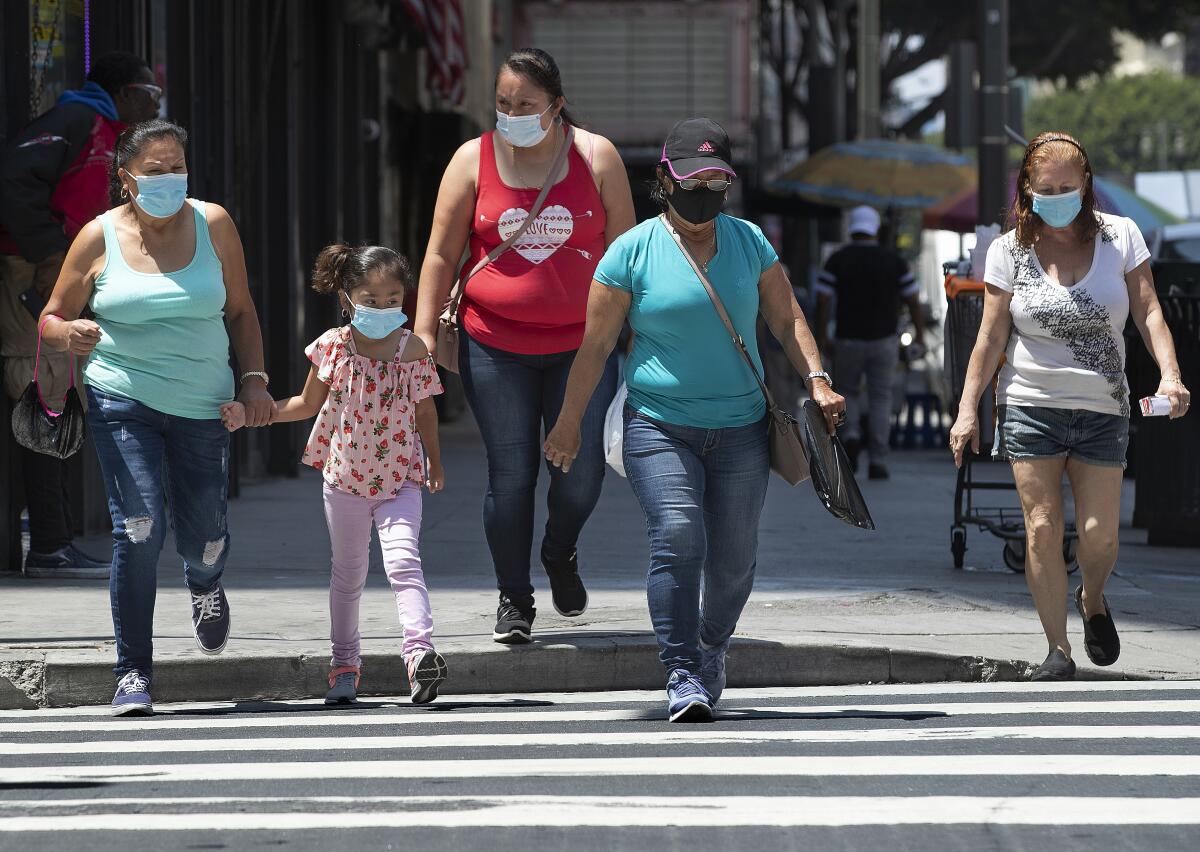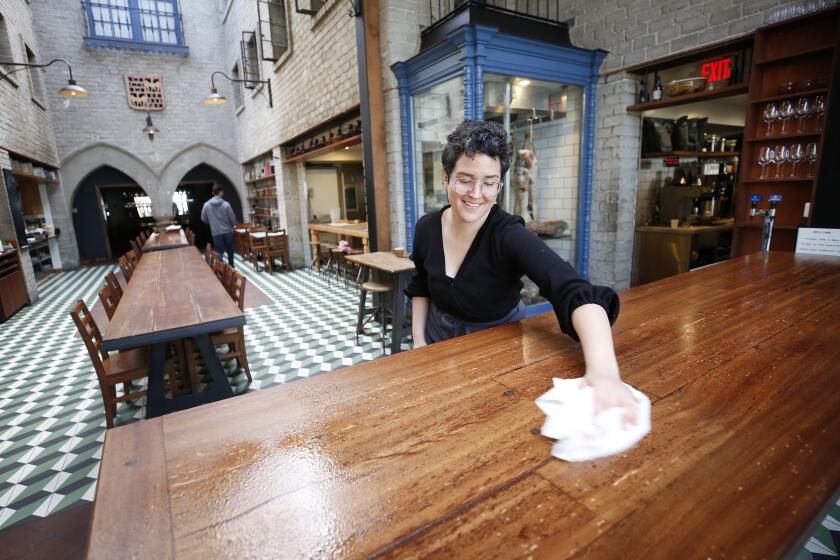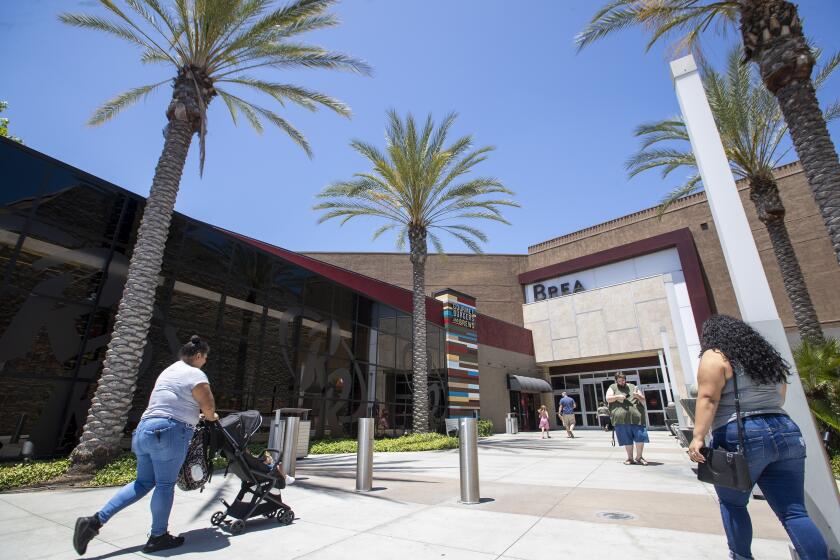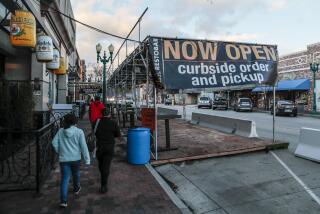California surpasses 4,000 coronavirus-related deaths, with L.A. County hardest hit

Los Angeles County reported 50 additional coronavirus-related deaths Friday, bringing California’s total to more than 4,000 — a somber milestone in the months-long pandemic that has ravaged communities and local economies. More than half of the state’s deaths have occurred in L.A. County.
The county also confirmed an additional 1,824 new cases, bringing the total to 51,562.
The news came after the county received permission from the state to reopen hair salons and barbershops and allow in-person dining.
The relaxed restrictions do not necessarily mean business as usual, though. County public health officials are expected to announce restrictions on operations, including a 60% capacity limit for restaurants.
That said, Public Health Director Barbara Ferrer said Friday that businesses are not required to be inspected before reopening and can do so as soon as they’re able to adhere to protocols.
L.A. County, the epicenter of California’s coronavirus outbreak, can reopen restaurants for in-person dining and resume services at hairstyling shops.
Gov. Gavin Newsom said that if a surge in coronavirus cases or hospitalizations occurs as counties continue to lift stay-at-home restrictions, the state may tell officials to pull back.
“We will direct local health officials to put a dimmer switch on,” he said Friday. “We are not mandating a pace for opening.”
Dr. Christina Ghaly, director of health services for L.A. County, said Friday that although the numbers of local cases are flattening, the county may see a new upward curve as more businesses reopen and chances of transmission increase. But that wouldn’t necessarily mean that the county would have to backtrack.
Ferrer said the state is developing a dashboard for counties to track statewide metrics related to improvements and pitfalls as modifications continue.
“If in fact the state determines that there’s a cause of concern, what they really are doing is offering technical support,” Ferrer said. The state wouldn’t necessarily inform a county to rescind its eased restrictions but would instead try to understand what is driving an increase in numbers to properly assist.
The death toll in the state — which now stands at 4,051 — remains much lower than in the coronavirus hot spots of Michigan, New Jersey and New York. But officials have said that though other metrics such as hospitalizations and new confirmed cases offer signs of significant progress, deaths in California remain a major concern.
Los Angeles County remains the center of the outbreak in California, with a total of 2,294 COVID-19 deaths. The number of confirmed cases in L.A. County represents about half of all California cases.
Los Angeles County announced Tuesday that it will align with California’s latest guidelines to allow faith-based services, in-store shopping at low-risk retail stores, drive-in movies and other recreational activities. Beauty salons will still be closed.
Earlier this week, the county allowed shopping malls and churches to reopen with strict social distancing and safety rules.
With the city of Los Angeles, Mayor Eric Garcetti on Friday announced that restaurants, barbershops and hair salons were permitted to reopen effective immediately, with stylists limited to one customer at a time with everyone required to wear masks.
Restaurants were also allowed to reopen and can apply with the city to open their sidewalks and private parking lots to outdoor dining as well, the mayor said. Houses of worship can fill up to 25% capacity or 100 people, whichever is lower, as long as social distancing guidelines are met and congregants wear masks, Garcetti said. Office workers too may begin to return to their jobs if teleworking from home isn’t possible.
Elsewhere in the state, San Francisco Mayor London Breed on Thursday unveiled a plan for reopening the city, including allowing outdoor dining and permitting customers inside retail stores beginning June 15.
“We’re entering a new phase of this crisis and we feel comfortable that we’re at a place that we can begin reopening parts of our economy,” Breed said. “But that is not to say that this virus doesn’t continue to threaten our city.”
San Francisco’s plan includes three phases.
In addition to allowing outdoor dining and restricted in-store retail service by June 15, the city plans to permit private household indoor services, religious services and ceremonies, outdoor exercise classes, sports games with no spectators, and nonemergency medical appointments.
The second phase would start on July 13, when restaurants could reopen for indoor dining, hair salons and barbershops could reopen, and real estate open houses could resume by appointment only.
By mid-August, schools, bars, nail salons, gyms, playgrounds, indoor museums, tattoo parlors and swimming pools might be able to reopen.
In the final phase — the date of which has yet to be determined — the city would reopen concert venues, nightclubs, festivals and hotels for tourism.
City officials cautioned that the schedule would be followed only if San Francisco continued to make progress in slowing the spread of COVID-19.
“We want to lock in those gains, and we want to move forward in a way that is going to be safe for everybody,” said San Francisco County Health Officer Dr. Tomás Aragón during an online forum with the mayor Friday.
During the 1918 flu pandemic, Aragón said, the places that reopened slowly did better economically because they did not have large second waves of infection.
He added that health officers and the city’s health department will soon release new guidelines about how families from different households might safely interact. The guidelines would focus on social distancing, face coverings, hand washing and the need to be tested first if a person felt ill, he said.
But at the same time, Newsom has routinely cautioned that even with businesses across the state starting to reopen, the threat of the coronavirus is not over.
“This virus has not gone away,” the governor said earlier this month. “Let’s not develop amnesia. Let’s not forget why we’re in this position in the first place. Let’s not be naive about the virulence of this disease.”
More to Read
Sign up for Essential California
The most important California stories and recommendations in your inbox every morning.
You may occasionally receive promotional content from the Los Angeles Times.
















